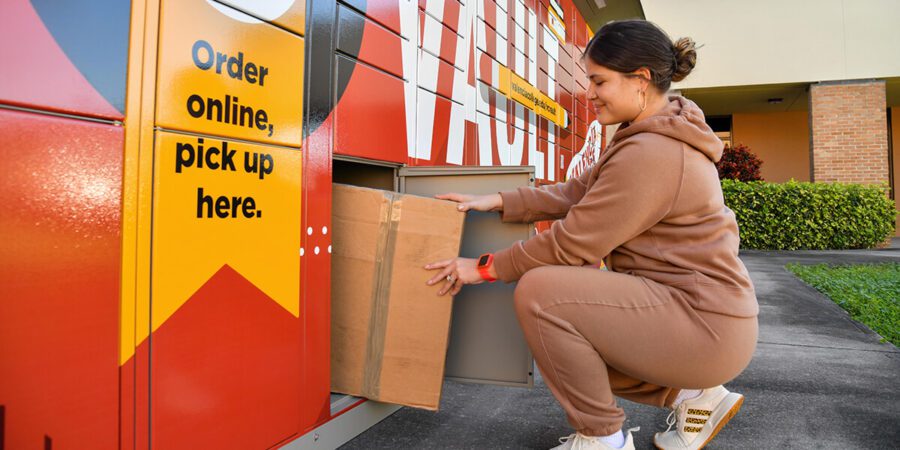
University
8 Ways Higher Education Institutions Can Increase Parent Engagement
Written by: Parcel Pending
5 Min Read
Published: November 18, 2024
Updated: November 19, 2024
For all the heated discussions about “helicopter parents,” higher education institutions have noted that active parents play a positive role in keeping students enrolled, engaged, and encouraged. Instead of rinse-and-repeat strategies when it comes to family involvement, savvy higher education institutions are actively courting freshmen moms and dads to ensure student success.
Engaged Parents Boost Retention Among Student
Research shows that creating a dialogue with parents keeps students enrolled. For instance, a recent CampusESP study, showed that student retention is 8.3% higher when they receive updates about their offspring’s progress.1 Drexel University is an excellent case study. After solely focusing on the student experience, retention hovered at about 80%. However, when the university implemented frequent parent communication and involvement, the retention rate jumped to 89.5%!
The story is even more compelling for Black and Hispanic students. Students in these demographics at Duquesne and Auburn Universities showed notably more significant improvements in retention rates when their families received updates than White students whose families received the same communications. Parent outreach to Pell-eligible and first-generation students also demonstrated similar increases in student retention.
Subir Sahu, PhD, Senior Vice President for Student Success at Drexel University, explains the jump in retention this way: “The reality for families is not everyone is starting off from the same starting point. Part of this work is to create a strong foundation for all of our students, and that’s what you’re seeing in this data — the mechanisms through which we can deliver solid information so that family members can engage with their students.”
The Need for Balance in Parent Interaction
Striking a balance between helpful and hurtful is key to a successful parent engagement strategy. At a recent orientation, one teacher summed up the need for distance between parents and their kids this way: “Your kid is going to fail at some point, and we are asking you not to step in and solve it for them.” This balancing act is made more complicated by the fact that today’s parents interact more frequently with their kids. In fact, almost 70% expect at least weekly communication from the college itself.2
Regardless, with parents more involved than ever, most colleges are finding ways to embrace this evolution. Enter groups like the Association of Higher Education Parent/Family Program Professionals (AHEPPP). When the Association was formed in 2009, it had 49 college members; today, it boasts 230. Member institutions share resources for developing parent engagement programs and strategies for success. Among AHEPPPs members are Syracuse University, which sends newsletters highlighting the most critical issues on campus, and Ohio State University, which emails parents about pressing deadlines, such as the last day to add or drop classes. These communications enable parents to have effective check-ins with their kids – without compromising students’ ability to develop important life skills.
8 Ways to Increase Parent Engagement
Here are a few ways your institution can make parent engagement strategies more effective:
1. Leverage In-Person Visits
Many students and parents are turned off by boilerplate speeches about the college experience when they visit. Makers of exceptional experiences select students and professors who can share unique roles and situations. Further, increase the comfort of visiting guests by keeping cold outdoor visits to a minimum and providing necessary snacks and lunch.
2. Personalize Email Marketing
Similar to strategies used by large retailers, families now expect personalized email marketing that meets their particular needs. Colleges have the data (such as what state the student is moving from) to provide solid information on the weather, activities during the season, and how students can spend holiday vacations.
3. Use Text Messages for Greater Impact
Although most universities use email communication, first-generation college students prefer text messaging nearly half (47%) of the time.3
4. Upgrade Direct Mail
Glossy, high-level brochures are no longer enough when it comes to parent engagement or helping students make a convincing decision. Most universities would do better to focus each direct mail piece on one key area and explain it thoroughly. This allows institutions to meaningfully answer common questions and/or highlight unique benefits.
5. Hold Honest Conversations About Financial Commitment
Most college-bound families struggle with how to pay for college. They need frank discussions and support with the actual costs of enrollment, including tuition, dorm room, meals, books, supplies, and other miscellaneous costs.
6. Showcase Institutional Value
If parents are going to pay for their child’s tuition, they want to be sure they will receive a return on their investment. 62-65% are looking for more information and support with job placements, networking events, and career services.4
7. Improve the Quality of Communication
94% of parents consider high-quality communication vital in their decision-making process, expressing the need for schools to prioritize clear and compelling messaging.5
8. Add a Fun Factor
Explore ways to make parent engagement more fun for both students and parents. The University of Pittsburgh, for instance, introduced a recent innovation to their on-campus smart locker solutions. These “birthday lockers” allow parents to send swag items to their children on birthdays. Students receive a notification on their birthdays to pick up some Pitt swag at a designated location on campus. When the door opens, the lockers play “Happy Birthday.” How sweet!
The data is clear: everyone wins when universities invest in parent engagement. Forward-thinking institutions recognize that family engagement creates a stronger support system for student success when adequately balanced, especially for first-generation and underrepresented students. By implementing thoughtful communication strategies and innovative programs (like birthday lockers), higher education institutions can harness parent involvement to boost retention rates while fostering student independence.
Ready to start delivering more for students and parents? Speak to a Parcel Pending representative today to find out how our lockers can help.
Sources:
- CampusESP. The positive impacts of family engagement on student retention. www.highereddive.com. June 17, 2024. https://www.highereddive.com/spons/the-positive-impacts-of-family-engagement-on-student-retention/718547/
- Weiss, Tara. Surveillance Parents Face the Ultimate Firewall: Freshman Year. www.wsj.com. October 1, 2024. https://www.wsj.com/lifestyle/helicopter-parents-college-freshman-ac32970f
- CampusESP. The crucial role of family engagement for first-generation students. www.highereddive.com. October 28, 2024. https://www.highereddive.com/spons/the-crucial-role-of-family-engagement-for-first-generation-students/730340/
- CampusESP. Cracking the code: What today’s parents really want from from colleges. www.higheredddive.com. Setpember 30, 2024. https://www.highereddive.com/spons/cracking-the-code-what-todays-parents-really-want-from-colleges/727611/
- Ibid.



